免费参加 技术演示讲台
Day 1 - Wednesday, August 27
How to shield self-driving cars from millimeter wave radar interference?
 Wu Zhou
Wu ZhouProduct manager
Beijing Racobit Electronic Information Technology Co. Ltd
China
As smart vehicles proliferate, low-cost, high-performance millimeter wave radars are now mainstream perception sensors. However, the surge in radar-equipped vehicles has intensified on-road electromagnetic congestion, significantly increasing mutual interference risks that jeopardize autonomous decision-making reliability – a critical industry challenge. This presentation addresses millimter wave radar interference mechanisms, analyzing sources and patterns in typical scenarios: inter-vehicle interference during driving, overtaking and parking, along with complex clutter interference in tunnels and urban environments. It also introduces the newly developed anti-interference testing solution, which enables comprehensive simulation of multiradar collision scenarios and real-world electromagnetic disturbances to enhance sensor robustness for safe autonomous operations.
What the audience will learn
- Develop a systematic understanding of typical interference challenges in millimeter wave radar large-scale commercialization
- Grasp industry-aligned priorities– the core requirements and evolutionary trends in radar anti-interference testing
- Explore Racobit cutting-edge millimeter wave radar test solutions, technical breakthroughs and competitive advantages in interference resilience validation
- Acquire actionable interference testing methodologies with implementation pathways to enhance millimeter wave radar product robustness
Unlocking accurate in-cabin acoustic measurements
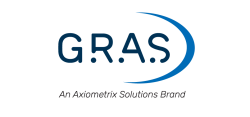 Santiago Rayes
Santiago RayesProduct manager
GRAS Sound & Vibration
Denmark
Measurement microphones, despite their precision, inherently alter the sound field due to reflections and diffractions caused by their size and shape. This challenge becomes critical in car cabins, where non-ideal acoustic environments – defined by complex materials and confined spaces – compromise test reliability. Smaller microphones, optimized for such environments, offer solutions but also introduce new hurdles. Additionally, the growing use of microphone arrays and artificial heads to characterize automotive audio systems presents unique challenges. Delve into the intricacies of in-cabin acoustic measurements, explore cutting-edge solutions and consider the evolving demands of automotive audio testing. Don’t miss it!
What the audience will learn
- Measurement microphone effects on sound fields
- The benefits of smaller microphones in minimizing sound field interference
- Limitations of microphones designed for ideal acoustic environments
- Choosing microphones for non-ideal conditions like car cabin tests
- Microphone arrays and artificial heads challenges in automotive audio tests
What kind of EOL testing system is needed for SDV?
 John Zhang
John ZhangManager of AT department
Windhill Technologies
China
EOL testing is an important step in vehicle production and manufacturing to ensure that the software version of the ECU is correct before leaving the factory, and the parameter configuration is consistent with the design requirements. There are new requirements for the EOL system, especially for SDV. The EOL system of Windhill Technology is based on the OTX international standard to achieve the sequence of flashing, calibration, testing and diagnosis. The software can run across different platforms and support various types of flashing protocols. Furthermore, it is easy to maintain.
What the audience will learn
- The requirements of software-defined vehicles for end-of-life (EOL)
- How to use OTX to implement the sequence of flashing, calibration, testing and diagnosis
- Advantages of the EOL system based on OTX
- How to implement flashing under different protocols such as DoIP, DoCAN, J1939 and private protocols
- Intelligence – iIntegrating with existing systems
Smart Cockpit Cluster Testing and Large Models' Efficiency Practice Sharing
 Xing Liu
Xing LiuPlatform Software Product Manager
BEIJING DONGZHOU TECHNOLOGY CO., LTD.
China
This presentation will outline the latest advancements and practical applications of the Intelligent Cockpit Cluster Test Management Platform (TESTBOT) and large model technology in improving testing efficiency. Our objective is to introduce these cutting-edge solutions as a means to significantly enhance the automotive industry's testing processes, thereby promoting technological innovation and accelerating product development cycles.
What the audience will learn
- Master the cluster platform solution for efficiently managing the testing of a vast number of devices.
- Understand the core methods and achievements of large model technology in enhancing test efficiency.
- Gain cutting-edge practical experience that empowers innovation and accelerated iteration in automotive testing.
AI innovations in the automotive industry
 Rui Li
Rui LiMarketing initiative manager
Keysight Technologies
China
The advent of Generative AI and large language models (LLMs) has sparked significant enthusiasm regarding their potential to revolutionize business operations across various sectors. However, the practical implications of AI for the automotive industry warrant a closer examination. This session delves into the technologies, their prospective applications and their current readiness for integration into automotive innovations, from electric vehicles to software-defined vehicles and beyond. Attend to gain insights into the challenges of deploying AI in the automotive sector to make thoughtful decisions in a safety-critical environment.
What the audience will learn
- How AI will impact the auto industry
- AI prospective applications in automotive innovations
- What Keysight can offer in the AI market trend
Power HIL and coordinated testing technologies and practices for EIC
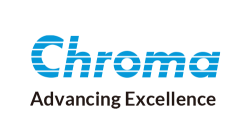 MingXing Zhu
MingXing ZhuSenior manager
Chroma ATE (SuZhou) Co. Ltd
China
This presentation explores advanced testing technologies for new energy vehicle EIC systems, focusing on power HIL and coordinated testing methods based on ISO26262 standards.
What the audience will learn
- Functional safety verification: How to implement power HIL and coordinated testing to meet ISO26262 requirements, enhancing vehicle safety
- Innovative testing platform: The modular power HIL testing platform and its unique capabilities in simulating complex real-world conditions
- Efficiency and cost benefits: How the testing solution improves efficiency, shortens development cycles and reduces costs
- Market and strategic value: Insights into the growing NEV market, the role of testing in gaining a competitive edge, and the positive impact it has
Test cases of Itech new-energy vehicles and incremental automotive electronic components
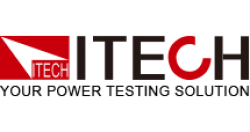 Eason Song
Eason SongProduct application engineer
Itech Electronic
China
Driven by global energy transformation and the 'dual carbon' strategy, China's new-energy vehicle industry is rapidly developing with innovation as the engine. With the continuous breakthroughs in electrification and intelligent technology, the industry has put forward higher requirements for the reliability, safety and testing efficiency of core components. As a leader in testing solutions in the field of new energy, Itech Electronic has always focused on the forefront of industry technology, empowering the upgrading of the industry chain with high-precision, intelligent testing equipment. This presentation will discuss the development trends of China's automotive industry, systematically showcase our company's innovative test cases in key areas such as electric drive systems, power batteries, charging facilities and high-voltage components, and analyze how cutting-edge technologies such as waveform analysis for automotive electronic networks can improve the quality and efficiency of the industry. We look forward to exploring the future direction of new-energy vehicle testing technology with you, injecting new momentum into the high-quality development of the industry.
What the audience will learn
- Development and prospects of the automotive industry
- Test case of electric drive motor and power battery
- Test cases of charging stations and vehicle chargers
- High-voltage electronic component testing case
- Curve waveform for automotive electronic network
High-precision vehicle dynamics measurements at Mercedes-Benz
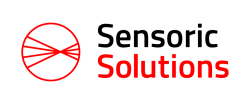 Kai Gilbert
Kai GilbertCEO
Sensoric Solutions Optic in Motion
Germany
Mercedes-Benz analyzes the smallest vehicle movements in order to perfect the driving characteristics typical of the brand. Hear how the slip angle helps with this and which sensors are used. One critical parameter in vehicle tuning is the vehicle's slip angle. This angle represents the difference between the vehicle's longitudinal axis and the velocity vector at a defined point of measurement. It provides valuable insights into tire and axle characteristics and general stability criteria. With advanced chassis systems such as rear-wheel steering, the measured slip angles can become very small. High resolution and accuracy are essential.
What the audience will learn
- Vehicle dynamics measurements at Mercedes-Benz
- Slip angle – how to measure
- What accuracies are possible
- Which technology is best suited for measuring the slip angle
- User-friendly operation and integration into existing systems
HBK torque measurement technology
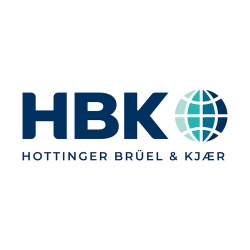 Keith Jin
Keith JinSales solution specialist
HBK
China
Torque is a crucial parameter in rotary power machinery, and torque measurement is widely applied across various industrial fields such as automotive, marine, aerospace, electric locomotives, energy and chemical engineering. Accurate torque measurement is essential for product development, condition monitoring, fault detection and prediction, automatic control, energy conservation and power balance indication. This presentation aims to integrate theory with practice, offering a comprehensive analysis of torque measurement application scenarios and practical insights. It also discusses key considerations in torque measurement based on real-world engineering applications.
What the audience will learn
- Torque measurement
- HBK's new-generation torque sensor
- Torque measurement application scenarios and practical insights
X-in-the-loop testing methods for chassis systems
 Chen Chen
Chen ChenTechnical director
Shanghai PoleLink Information Technology Co. Ltd
China
The presentation will offer an introduction to XIL testing methods for chassis system development; virtual testing methods for model-based development; HIL testing for steering, braking and suspension systems; driving experience testing in the laboratory environment; and data close-loop in XIL testing.
What the audience will learn
- How to build up a virtual testing environment for chassis system testing
- How to use HiL test benches for steering, braking and suspension system test
- How to compare the testing data with your design goal